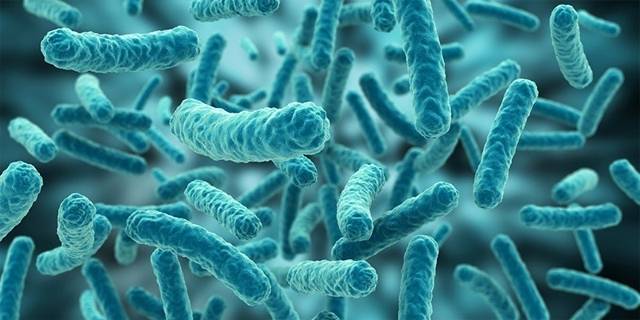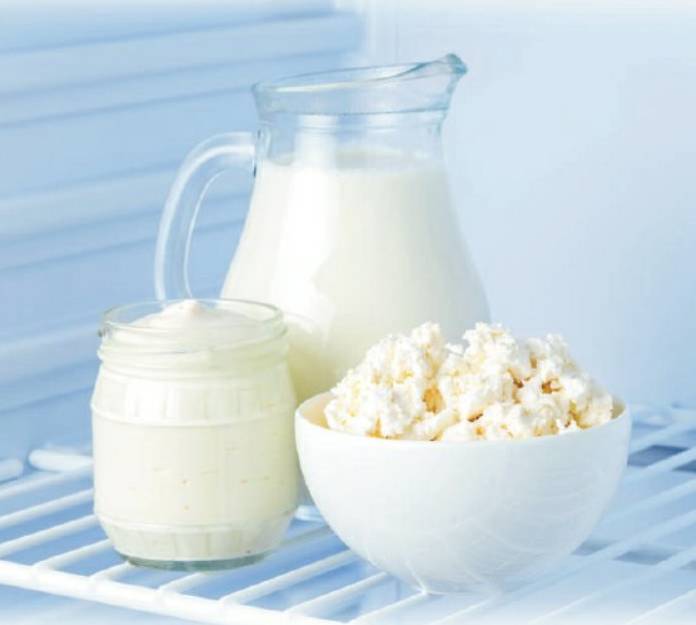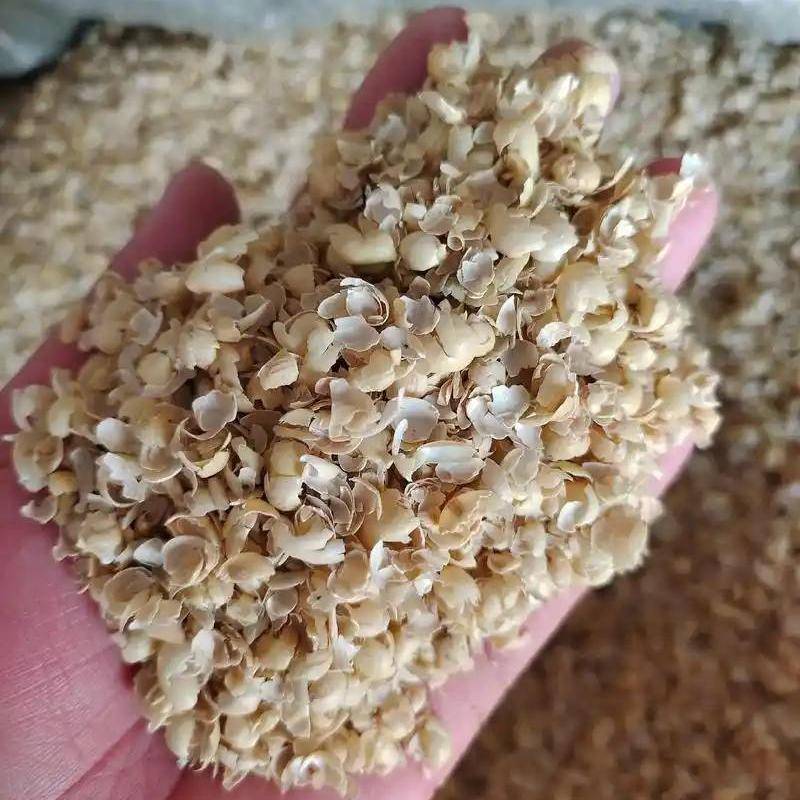95% FOS Fructooligosaccharides Powder for Natural Prebiotics Solution
In the new consumer trend prioritising both health and taste, food, beverage, and health supplement companies are actively seeking innovative and reliable raw material solutions. Green Spring Technology has introduced a high-purity (≥95%) and fully compliant low-polyfructose (FOS) ingredient. As an internationally recognised natural prebiotic and high-quality water-soluble dietary fibre, this ingredient effectively enhances product health benefits, improves taste and texture, and meets clean label requirements, making it an ideal choice for developing the next generation of healthy foods.
Fructo-oligosaccharides (FOS) are naturally occurring non-reducing sugars composed of 1-3 fructose units linked by β(2→1) glycosidic bonds to the fructose unit in sucrose. They primarily include functional components such as sucrose trisaccharide, sucrose tetrasaccharide, and sucrose pentasaccharide, with a degree of polymerisation ranging from 2 to 9. It is a natural active ingredient and an excellent water-soluble dietary fibre.
Fructo-oligosaccharides are naturally present in various plants. As one of the most extensively studied and widely applied prebiotics, FOS possesses dual physiological characteristics as a powerful bifidogenic factor and dietary fibre. It has been approved by regulations in over 200 countries and regions worldwide and is widely used in industries such as food, health supplements, beverages, cosmetics, and animal feed.
Green Spring Technology adheres to high-standard production of high-quality FOS powder raw materials, committed to providing customers with stable, safe, and functionally supported ingredient solutions to help your products stand out in the competitive market.
1 Benefits of Fructooligosaccharides
1.1 Fructooligosaccharides (FOS): The Star Prebiotic Ingredient Empowering Healthy Product Innovation
En hoy y#39;s market trend towards gut health and functional ingredients, fructooligosaccharides (FOS) are internationally recognised as high-quality prebiotics and water-soluble dietary fibres, increasingly becoming the ideal choice for food, beverage, and health supplement companies seeking to develop differentiated health products. Their exceptional prebiotic properties and excellent processing adaptability provide a solid foundation for product innovation.
Research indicates that FOS can be selectively utilised by beneficial bacteria such as Bifidobacterium and Lactobacillus in the gut, where they are fermented into functional metabolites such as short-chain fatty acids. A human trial conducted by Zhang Fan et al. [5] showed that daily intake of 20 mL of FOS for 14 consecutive days significantly increased the levels of Bifidobacterium and Lactobacillus in the gut of participants.
Zhang Li [6] confirmed through in vitro and in vivo experiments that oligosaccharides promote the growth of both bifidobacteria and lactobacilli. G. Gibson et al. [7] also observed in a volunteer trial that daily supplementation with 15 g of oligosaccharides resulted in a significant increase in the proportion of bifidobacteria in faeces.Additionally, Shen Jian et al. [8] used molecular biological methods in a trial with young pigs to validate the efficacy of short-chain oligosaccharides in increasing the number of bifidobacteria.

As a stable, safe, and regulatory-approved functional ingredient, oligofructose not only helps improve the intestinal microecological environment but is also easily applicable to various end-product formulations, including solid beverages, yogurt, gummies, Los suplementos dietéticos, and health foods, providing strong support for companies to develop the next generation of gut health products.
Green Spring Technology is committed to providing customers with high-purity, high-quality oligofructose powder, collaborating with partners to drive innovation and upgrading in the health food industry.
1.2 Fructooligosaccharides (FOS): A Natural Dietary Fibre Ingredient
As a high-quality water-soluble dietary fibre, fructooligosaccharides (FOS) not only exhibit excellent fermentable properties but also demonstrate potential application value in enhancing mineral bioavailability, making them an ideal raw material choice for nutrient fortification and functional food development.
Research indicates that FOS can be fermented by gut microbiota in the colon to produce organic acids, thereby moderately regulating intestinal pH levels and enhancing the solubility of various minerals. A clinical trial conducted by Holloway L. et al. [16] on postmenopausal women showed that continuous intake of a mixture containing FOS and inulin for six weeks may have positive effects on mineral metabolism. Animal experiments by Wang Yu et al. [17] also demonstrated that supplementing with oligosaccharides increased the apparent absorption rate of minerals such as calcium, magnesium, and iron in mice, while also elevating liver zinc and femur magnesium levels (P < 0.01).
On the other hand, MARTIN B. R. et al. [18] reported in a study of healthy adolescent girls that daily supplementation with 9 g of oligofructose did not result in significant changes in calcium absorption, suggesting that its effects may be related to individual basal metabolic status and highlighting the complexity of the raw material in practical applications.
As a natural dietary fibre ingredient, oligofructose demonstrates clear potential in supporting mineral bioavailability and regulating intestinal environment, making it suitable for various end-product categories such as nutrient-fortified foods, functional beverages, dietary supplements, and health products for specific populations, providing enterprises with scientific, compliant, and high-efficiency prebiotic solutions.
2 Applications of Oligofructose Ingredients
2.1 Oligofructose (FOS): Diverse Applications Empowering Innovation and Upgrading in Dairy Products
As a natural functional oligosaccharide and sweetener, FOS, with its excellent solubility, stability, and mild sweetness, is increasingly becoming an important functional ingredient in the dairy, beverage, and baking industries, helping companies create end products that combine health benefits with outstanding flavour.
In dairy applications, FOS is widely used in products such as milk powder, yoghurt, and fermented milk. It not only serves as a prebiotic ingredient to support product health claims but also provides a nutrient source for probiotics in fermented milk products, helping to maintain live bacteria activity and product stability.
Green Spring Technology is committed to providing customers with high-purity, high-quality FOS raw materials solution. We strictly adhere to regulatory standards to ensure product performance stability and application reliability. Whether enhancing the health value of existing dairy products or developing the next generation of functional products, Green Spring Technology offers professional raw material solutions and technical support.

2.2 Fructooligosaccharides (FOS): The Ideal Functional Ingredient for Innovative Health Beverages
As consumers increasingly demand both health benefits and great taste, the beverage industry is accelerating its transition toward functional, low-sugar, and clean-label products. Fructooligosaccharides (FOS), a naturally sourced functional sweetener and dietary fibre, are emerging as one of the core ingredients for developing the next generation of healthy beverages.
FOS offers excellent solubility and a refreshing taste, making it suitable for a wide range of beverage products, including tea beverages, functional water, fruit juice drinks, protein beverages, and carbonated drinks. Its sweetness is approximately 30%-60% of sucrose (varying by product type), enabling it to provide a mild sweetness while significantly reducing product calories and helping to increase dietary fibre content, aligning with current market demand for low-sugar, low-calorie products.
As a non-cariogenic ingredient, oligofructose does not cause significant fluctuations in blood sugar levels after consumption, making it ideal for consumers concerned about blood sugar management, oral health, and weight control. Additionally, its excellent processing stability and compatibility enable products to achieve a more balanced taste and a fresher flavour profile.
Green Spring Technology offers high-purity oligofructose ingredients in various specifications, strictly adhering to national standards, to assist customers in developing innovative beverage products that meet clean label requirements, have clear functional benefits, and deliver outstanding flavour. We are committed to collaborating with you to seize new opportunities in the healthy beverage market.

2.3 Fructooligosaccharides (FOS): An Innovative Choice for Green Feed Additives
In the field of animal nutrition, fructooligosaccharides are emerging as an efficient and green functional feed additive, offering new solutions for modern healthy animal farming. Their excellent prebiotic properties and good processing adaptability make them suitable for use in feed formulations for various animals, including pigs, poultry, and aquatic species.
Research indicates that FOS helps improve the structure of the intestinal microbiota in animals and supports the digestion and absorption of nutrients. In Japan, researchers have successfully applied FOS in pig feed, demonstrating its positive potential in enhancing animal growth performance and improving feeding conditions. Qu Mingren et al. [34] also found in a trial with Taihe chickens that the use of FOS feed additives could moderately improve serum protein content.
As a green additive that can replace traditional antibiotics, oligofructose helps promote the development of ‘antibiotic-free farming,’ aligning with the current demand in the animal nutrition field for safe, sustainable, and environmentally friendly feed ingredients.
Green Spring Technology adheres to the product philosophy of ‘natural, efficient, and compliant,’ providing high-quality oligofructose raw materials to feed companies, supporting customers in developing more competitive animal nutrition products, and jointly promoting the green transformation and sustainable development of the livestock industry.

2.4 Applications in Other Fields
Fructooligosaccharides have excellent compatibility and can be blended with various products during processing. In addition to their widespread application in the dairy, beverage, and baked goods sectors, they also have certain applications in other fields.
In the health food sector, fructooligosaccharides are used as prebiotic ingredients in formulations supporting intestinal health and mineral absorption.
3 Market Prospects
As a multifunctional, high-value natural ingredient, oligofructose (FOS) plays a key role in the upgrading and innovation of health foods. With the continuous growth in consumer demand for gut health and functional foods, the market potential for FOS raw materials is enormous.
Green Spring Technology specialises in plant-based extract raw materials, with a deep understanding of the raw material requirements and regulatory standards for food and health supplements. We strictly control quality to ensure the stability, safety, and efficacy of every batch of high-purity FOS raw materials.
Looking for compliant, high-purity prebiotics and dietary fibre raw materials to enhance product health attributes and optimise taste?
Need reliable solutions for your dairy, beverage, baking, health supplement, or innovative products?
Contact us! Get detailed technical specifications, compliance documents (COA, specification sheets), and samples of our 95% high-purity FOS raw materials, and discuss with our experts how to incorporate FOS into your next star product!
Referencias:
[1] administración General de supervisión de calidad, inspección y cuarentena de las personas#39;s República de China, administración de normalización de la gente 's República de China. Oligofructosa: GB/T 23528-2009[S]. Beijing: China Standards Press, 2009.
[2] Cao Min, Lei Guanghong, Mi Yunhong, et al. Progreso de la investigación de oligofructosa [J]. Ciencia y tecnología de la industria ligera, 2017, 33(3): 19-21, 26.
[3] asociación China de normalización. National standard sample of oligofructose released [J] (en inglés). China Standardization, 2015(6): 62.
[4] ju Xuezhi, Wu Jianfeng. Funciones fisiológicas y producción y aplicación de oligofructosa [J]. China Food Additives, 2007 (6): 148-157.
[5] Zhang Fan, Wang Huiling, Meng Jing. Efecto de la oligofructosa sobre la flora intestinal humana [J]. Modern Preventive Medicine, 2006, 33 (2): 158-159.
[6] Zhang Li. Estudio de las propiedades físicas y químicas y efectos de dos tipos de oligofructosa sobre los probióticos [D]. Tianjin: universidad de Tianjin de ciencia y tecnología, 2016.
-
anterior
Oligofructose Ingredients Elevate Innovative Functional Food and Beverage Products
-
siguiente
¿Cuáles son los usos del Beta glucano de avena en la acuicultura?


 inglés
inglés francés
francés español
español ruso
ruso coreano
coreano Japonés japonés
Japonés japonés



